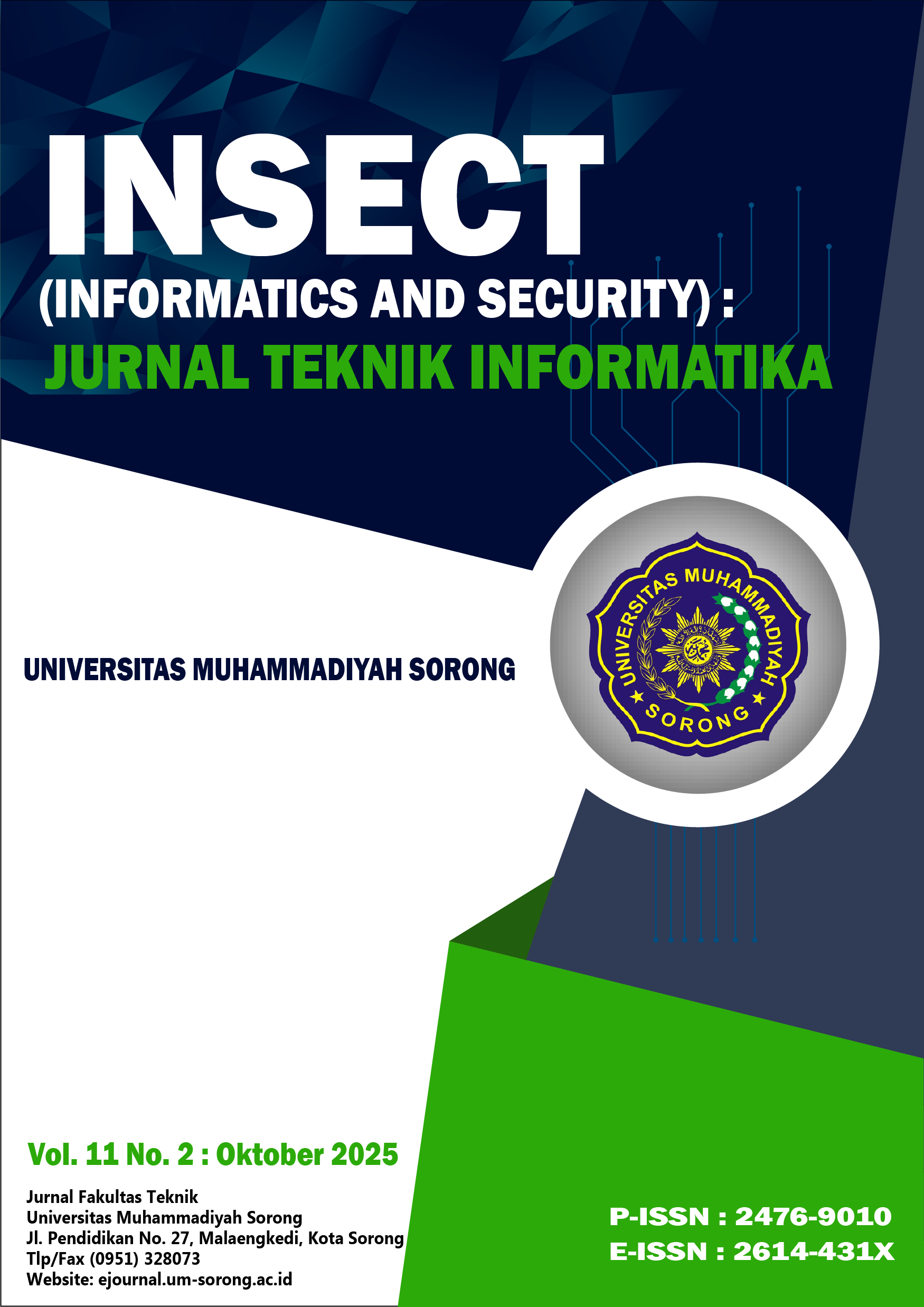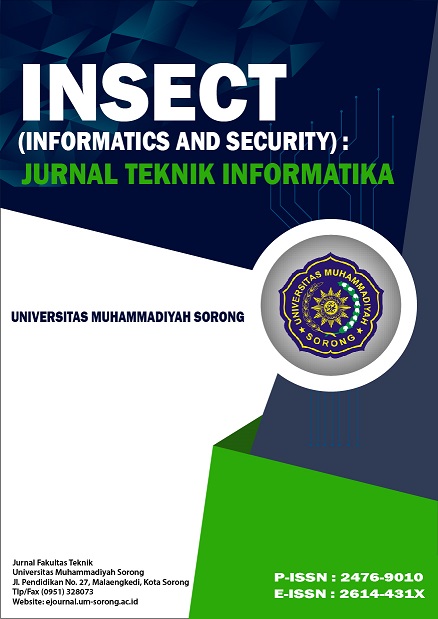Development of a Digital Attendance System Based on Face Detection and Recognition at the Department of Information and Communication Technology Education UNIMA
DOI:
https://doi.org/10.33506/insect.v11i2.4529Keywords:
Academic Environment, Digital Attendance, Face Detection, Face Recognition, Information SystemAbstract
The growing capabilities of facial recognition technology have driven the innovation of digital attendance solutions, offering a more reliable alternative to conventional systems that tend to be inefficient and vulnerable to misuse. This research focuses on designing and applying a digital attendance system utilizing face detection and recognition at the Department of Information and Communication Technology Education, Universitas Negeri Manado. This is a research and development (R&D) study using the prototype method, in which the system is built using face encoding technology and the K-Nearest Neighbors (KNN) algorithm to detect and recognize users' faces through a webcam in real-time. The system was tested in real-world scenarios to evaluate accuracy, duplicate prevention, and system response time. The results showed that the system successfully recognized faces with 92% accuracy, prevented duplicate face registration, and recorded attendance quickly and automatically. The implemented web-based dashboard demonstrated strong performance in helping administrators oversee user information and attendance records. As a result, the system has proven to be effective in improving the precision and speed of attendance monitoring in academic environments, establishing itself as a modern solution that supports the digitalization of educational administration.
References
[1] A. Zein, “Sistem Absensi Cerdas Menggunakan Open CV Berbasis Pengenalan Wajah,” Sainstech, vol. 33, no. 3, pp. 36–41, Sep. 2023. [Online]. Available: https://doi.org/10.37277/stch.v33i3.1733
[2] W. Kuang and A. Baul, “A Real-time Attendance System Using Deep-learning Face Recognition,” 2020 ASEE Virtual Annual Conference Content Access Proceedings, 2020. [Online]. Available: https://peer.asee.org/33949
[3] N. A. Ismail et al., “Web-based university classroom attendance system based on deep learning face recognition,” KSII Transactions on Internet and Information Systems, vol. 16, no. 2, pp. 503–523, 2022. [Online]. Available: https://doi.org/10.3837/tiis.2022.02.008
[4] A. Rao, “AttenFace: A Real Time Attendance System using Face Recognition,” arXiv preprint, arXiv:2211.07582, 2022. [Online]. Available: https://arxiv.org/abs/2211.07582
[5] I. Malah, H. Sumual, and I. Rianto, “Perancangan sistem absensi, tracking guru dan siswa di Sekolah Menengah Kejuruan,” EduTIK: Jurnal Pendidikan Teknologi Informasi dan Komunikasi, vol. 2, no. 2, pp. 159–171, 2022.
[6] D. Sunaryono, J. Siswantoro, and R. Anggoro, “An android-based course attendance system using face recognition,” Journal of King Saud University – Computer and Information Sciences, vol. 33, no. 3, pp. 304–312, 2021. [Online]. Available: https://doi.org/10.1016/j.jksuci.2019.01.006
[7] B. C. Roy, I. Hossen, M. G. Rashed, and D. Das, “Automated student attendance monitoring system using face recognition,” in Intelligent Computing and Optimization, P. Vasant, I. Zelinka, and G. W. Weber, Eds. Springer, 2021, pp. 541–551. [Online]. Available: https://doi.org/10.1007/978-3-030-68154-8_54
[8] D. N. Azizah et al., “Implementation of Automatic Attendance System Based on Face Recognition Using CNN Method in IPB University Vocational School Environment,” International Journal of Multilingual Education and Applied Linguistics, vol. 1, no. 4, 2021. [Online]. Available: https://doi.org/10.61132/ijmeal.v1i4.94
[9] I. D. M. B. A. Darmawan, “Implementation of Face Recognition for Attendance Recording in Online Learning,” Jurnal Ilmu Komputer, vol. 16, no. 2, 2023.
[10] J. Walangitan, S. R. U. A. Sompie, and X. B. N. Najoan, “Sistem absensi pengenalan wajah bermasker,” Jurnal Teknik Informatika, vol. 19, no. 1, pp. 21–30, 2024.
[11] S. Saragih, “Implementasi algoritma Haar Cascade menggunakan pengolahan citra digital untuk absensi deteksi wajah dan nama menggunakan Python,” Jurnal Sosial dan Teknologi (SOSTECH), vol. 5, no. 3, pp. 789–796, 2025.
[12] L. Susanti, N. K. Daulay, and B. Intan, “Sistem absensi mahasiswa berbasis pengenalan wajah menggunakan algoritma YOLOv5,” JURIKOM (Jurnal Riset Komputer), vol. 10, no. 2, pp. 640–647, 2023.
[13] R. S. Pressman, Software Engineering: A Practitioner’s Approach, 7th ed. New York: McGraw-Hill, 2010.
[14] J. Wijaya and L. Lokollo, “Pengembangan Modul Elektronik (E-Modul) Interaktif Berbasis Flipbook pada Mata Kuliah Dasar-Dasar Kimia Organik Materi Asam Karboksilat,” Jurnal Pendidikan, vol. 14, no. 1, n.d.
[15] Associated Press, “New York bans facial recognition in schools after report finds risks outweigh potential benefits,” AP News, Sep. 27, 2023. [Online]. Available: https://apnews.com/article/facial-recognition-ban-schools-ny

Downloads
Published
How to Cite
Issue
Section
License
Copyright (c) 2025 Serah Lihat Zalukhu, Yaser Destronom Telaumbanua, Smarnince Paulus Saladat, Agnes Putri Vestiliani Mendrofa

This work is licensed under a Creative Commons Attribution-ShareAlike 4.0 International License.







